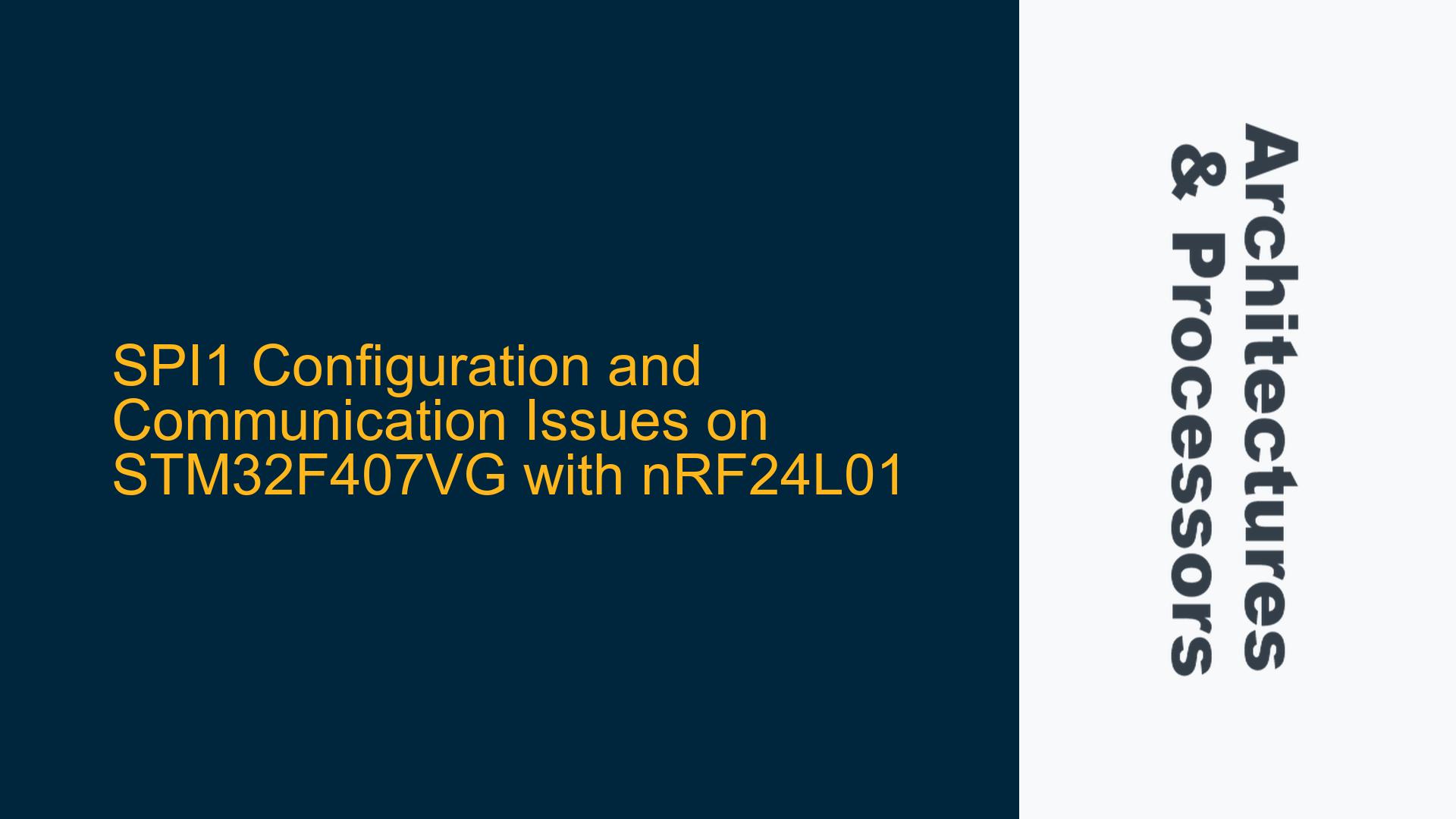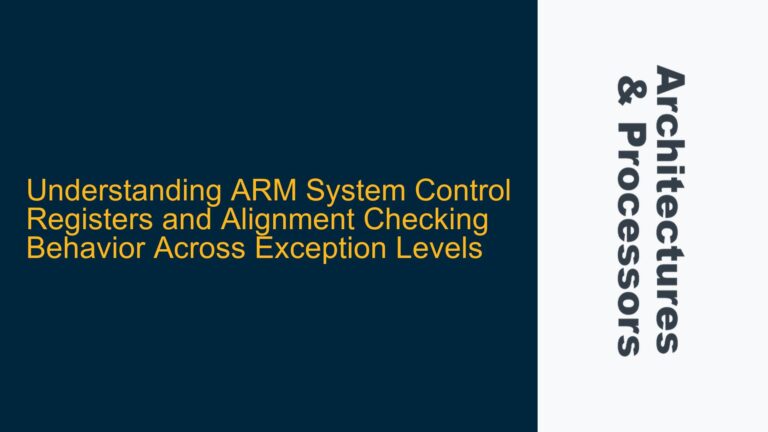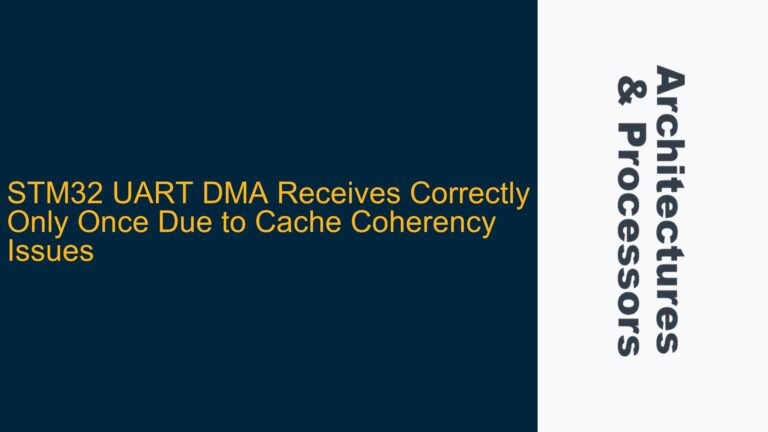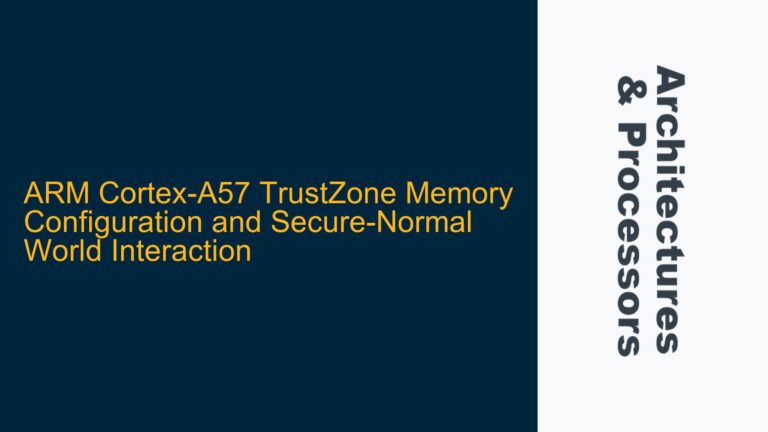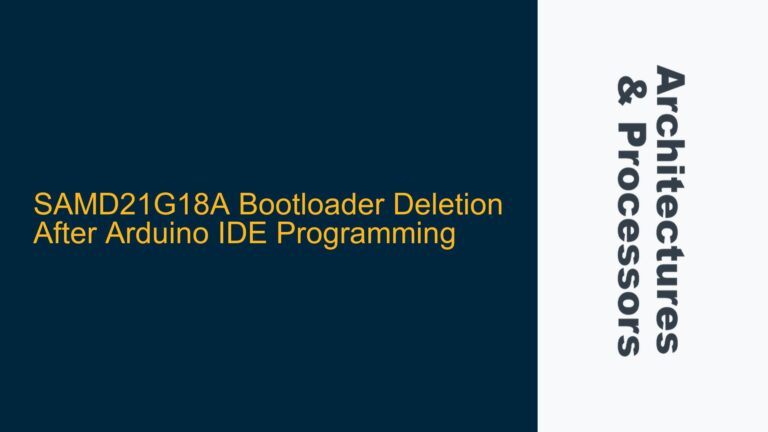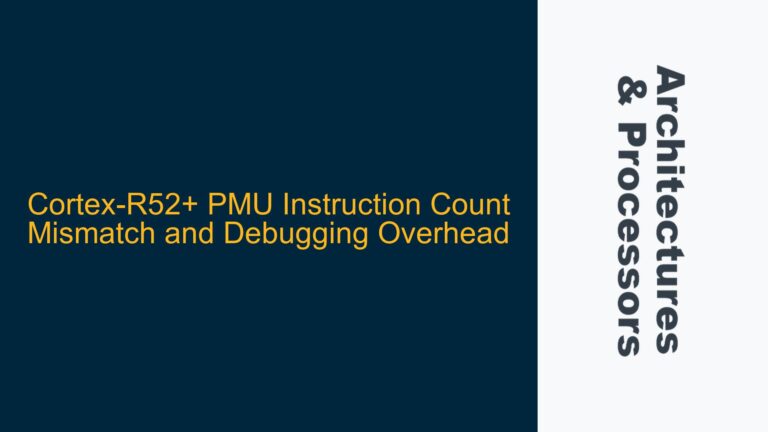SPI1 Initialization and GPIO Configuration Misalignment
The core issue revolves around the SPI1 peripheral initialization and GPIO configuration on the STM32F407VG microcontroller, specifically when interfacing with the nRF24L01 module. The provided code attempts to configure SPI1 for communication with the nRF24L01, but the initialization sequence and GPIO settings are misaligned with the requirements of the STM32F407VG’s reference manual and the nRF24L01’s timing and protocol specifications.
The SPI1 initialization function (SPI1_init) configures the GPIO pins for SPI1 (PA5 for SCK, PA6 for MISO, and PA7 for MOSI) and sets up the SPI1 control registers. However, the GPIO alternate function mapping and the SPI1 control register settings are not fully aligned with the STM32F407VG’s hardware requirements. Additionally, the nRF24L01 module requires precise control of the Chip Enable (CE) and Chip Select Not (CSN) pins, which are not properly managed in the provided code.
The GPIO pins PA3 (CE) and PA4 (CSN) are used to control the nRF24L01 module. The CSN pin is used to select the nRF24L01 for SPI communication, while the CE pin is used to activate the module’s transmit or receive modes. The provided code includes functions to control these pins (CSN_L, CSN_H, CE_L, CE_H), but the implementation does not account for the timing requirements of the nRF24L01 module, which can lead to communication failures.
Incorrect SPI1 Control Register Settings and nRF24L01 Timing Violations
The SPI1 control registers (CR1 and CR2) are configured with values that may not align with the nRF24L01’s communication requirements. The SPI1->CR1 register is set to 0x31C, which configures the SPI1 peripheral as a master, enables the SPI, sets the baud rate, and configures the clock polarity and phase. However, the baud rate setting may be too high for the nRF24L01 module, which typically operates at a maximum SPI clock frequency of 10 MHz. Additionally, the clock polarity and phase settings (CPOL and CPHA) must match the nRF24L01’s requirements, which are typically CPOL = 0 and CPHA = 0.
The SPI1->CR2 register is set to 0, which disables all optional features such as interrupts, DMA, and hardware NSS management. While this configuration is acceptable for basic SPI communication, it does not account for potential timing issues that may arise when communicating with the nRF24L01 module. The nRF24L01 requires precise timing for the CSN and CE signals, and the lack of hardware NSS management can lead to timing violations.
The nRF24L01 module also requires a specific sequence of operations for SPI communication, including proper handling of the CSN and CE pins. The provided code includes functions to control these pins, but the implementation does not account for the timing requirements of the nRF24L01 module. For example, the CSN pin must be held low for the entire duration of an SPI transaction, and the CE pin must be toggled to switch between transmit and receive modes. The provided code does not ensure these timing requirements are met, which can lead to communication failures.
Correcting SPI1 Initialization and Implementing nRF24L01 Timing Compliance
To resolve the SPI1 configuration and communication issues, the following steps should be taken:
-
Correct SPI1 Initialization: The SPI1 initialization function (
SPI1_init) should be updated to ensure the GPIO pins are properly configured for SPI1 communication. The GPIO alternate function mapping should be set to AF5 for PA5 (SCK), PA6 (MISO), and PA7 (MOSI). The SPI1 control registers should be configured with the correct baud rate, clock polarity, and phase settings to match the nRF24L01’s requirements. The baud rate should be set to a value that does not exceed the nRF24L01’s maximum SPI clock frequency of 10 MHz. The clock polarity and phase should be set to CPOL = 0 and CPHA = 0. -
Implement Proper CSN and CE Timing: The functions to control the CSN and CE pins (
CSN_L,CSN_H,CE_L,CE_H) should be updated to ensure the timing requirements of the nRF24L01 module are met. The CSN pin should be held low for the entire duration of an SPI transaction, and the CE pin should be toggled to switch between transmit and receive modes. The timing of these signals should be carefully managed to avoid violating the nRF24L01’s timing requirements. -
Verify SPI Communication: After updating the SPI1 initialization and CSN/CE timing, the SPI communication should be verified using a logic analyzer or oscilloscope to ensure the signals are correctly aligned with the nRF24L01’s requirements. The SPI transactions should be checked for proper timing and data integrity.
-
Debugging and Testing: If the SPI communication still fails, additional debugging and testing should be performed to identify any remaining issues. This may include checking the nRF24L01’s power supply, verifying the SPI signal levels, and ensuring the nRF24L01 module is properly connected to the STM32F407VG.
By following these steps, the SPI1 configuration and communication issues on the STM32F407VG with the nRF24L01 module can be resolved, ensuring reliable and efficient communication between the microcontroller and the nRF24L01 module.
